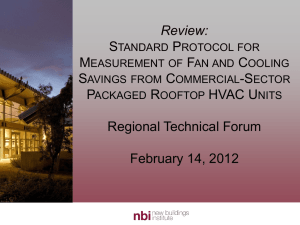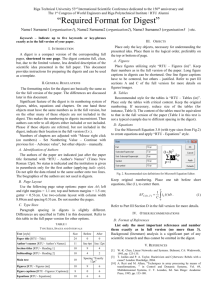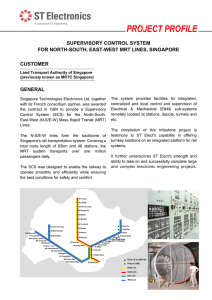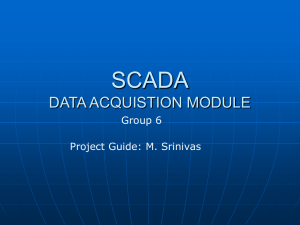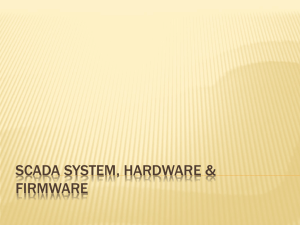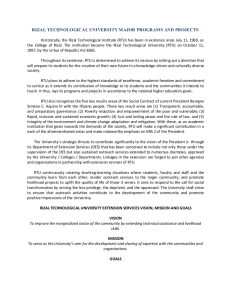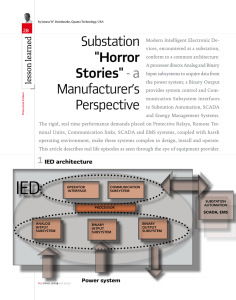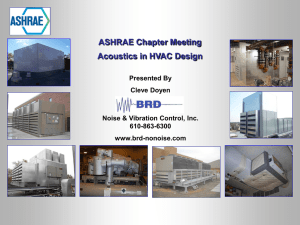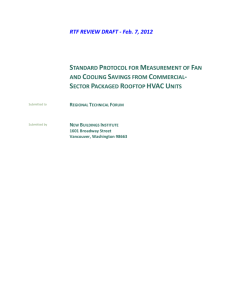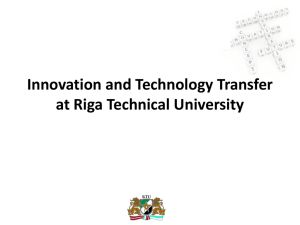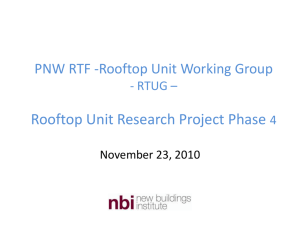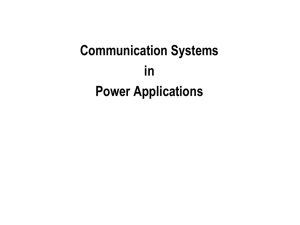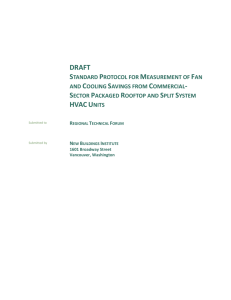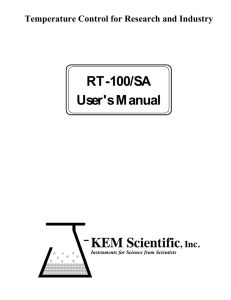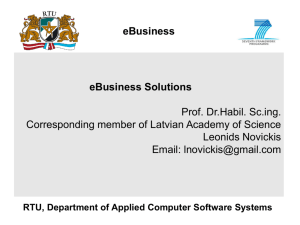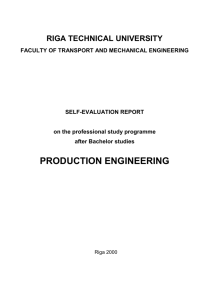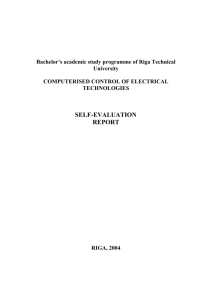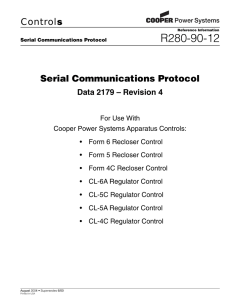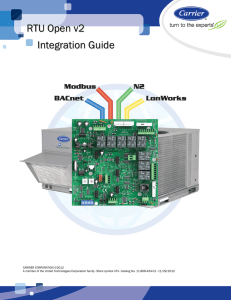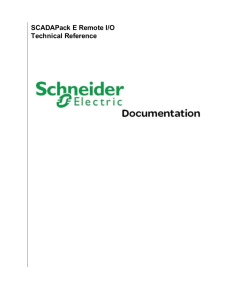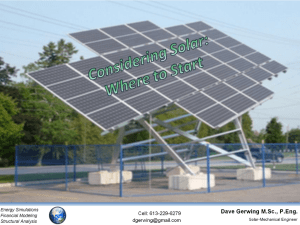Savings Energy and Improving Occupant Comfort
advertisement
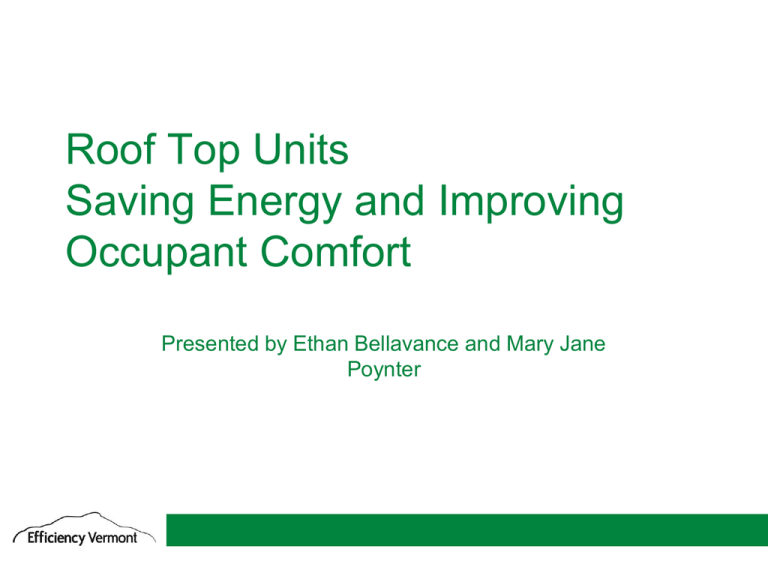
Roof Top Units Saving Energy and Improving Occupant Comfort Presented by Ethan Bellavance and Mary Jane Poynter 1 Presentation Outline • Roof Top Unit (RTU) Overview- how do they work, key components • Why are RTU’s so prevalent? • What are problems with RTU’s • How to improve reliability and reduce energy usage. Good, Better, Best Approach • Results of Efficiency Vermont RTU pilot • Conclusion 2 3 Roof Top Unit Components 4 Key Energy Components 1.) Compressors 2.) Supply fans, condenser fans 3.) Heat Source 4.) Economizer 5.) Crankcase heaters 5 Why are they everywhere? • Simplicity – you can get it all (heating, cooling, ventilation) • Readily Available • Great option for leased space • Low first cost option 6 University mall 7 Barnes and Noble 8 RTU Problems • Out of sight out of mind • Lack of maintenance • Limp along attitude • False sense of efficiency NBI - REVIEW OF RECENT COMMERCIAL ROOF TOP UNIT FIELD STUDIES IN THE PACIFIC NORTHWEST AND CALIFORNIA, 2004”; pg. 6 9 What can be done to improve them? We propose three options to fit numerous budget situations. 1. Good - Maintenance 2. Better – Advanced Controls 3. Best – New “Best of the Best” Unit 10 $25,000 Average Costs of Approach 10 Ton RTU Cost of Measure $20,000 $15,000 Maintenance Controllers New Unit $10,000 $5,000 $- Method of Savings Age Based Approach Applicability 30 Age of RTU 25 15 to 25 Years 20 15 10 1 to 25 Years 1 to 10 Years 5 0 GOOD BETTTER BEST 12 The Good Approach Overhauling and maintaining your existing RTU • Quarterly and yearly preventive maintenance • Planning for failures and replacements • What do you need to be looking for? • Education 13 The Better Approach Add advanced controls to existing RTU • Definition of advanced controls: • VFD control of supply fan and compressor or supply fan only • Advanced Economizer functions • Fault diagnostics and web based interface • We’ve worked with Digi RTU and Catalyst 14 How do Controllers Work? Controller Fan Speed 100 Percent Fan Speed 90 80 70 60 100 50 90 40 Catalyst Digi 75 30 20 45 10 0 • Note: You need a properly functioning RTU before a controller is installed. 15 The Best Approach: DOE Challenge Qualifying Units • Install new “high efficiency” >18IEER unit • Not cost effective if existing RTU is functioning properly and is well maintained. • Best when replacing failed units or scheduled replacement due to end of life • R22 phase-out will have an impact on the market take-up 16 Potential Energy Savings • Compared to a code compliant 10 ton RTU • 5,000 KWH savings/Year • 30 MMBTU savings/Year • $1100-1600/year operating cost savings • Conservative Incremental Cost $8,000 • Return on Investment 5-7 years 17 Efficiency Vermont RTU Pilot Results 18 Pilot Scope Location Space Type Mixed Use, Vermont Mainly Country Store Warehouse, some Office RTU Size Range RTU Age Range Number of RTU’s Metered 8 to 20 13 to 21 6 Vishay Light Manufacturing 10 to 15 1 to 12 5 Vermont Energy Investment Corporation Office 8 to 30 2 to 10 3 19 What did we Find? 20 Inoperable Compressors 21 Compacted Coils 22 Corroded Contactors 23 Worn Belts 24 Things to Watch out For http://images04.olx.com/ui/4/28/53/1357337656_469672553_4-Bee-removal-silver-lake-save-the-bees213-928-7764-Services.jpg 25 What was the energy impact of the tune-up? kWh/ton 600 500 400 300 200 100 0 -100 kWh/ton Best average worst -200 -300 -400 -500 26 Controller Energy Savings per Ton 3,500 kWh Savings /ton 3,000 2,500 2,000 1,500 1,000 500 Office Warehouse Manufacturing 27 The Better Approach: Controller % Savings 70% 60% 50% 40% 30% 20% 10% 0% Office Warehouse Manufacturing 28 Pilot Status • Data will continue to be collected at phase 1 sites in 2014. • Identification and metering of Phase 2 clients will begin in spring 2014. • Installation of up to another 8 controllers in phase 2 • Published results of all pilot locations 29 Conclusion • Options for existing RTU • Cost effective solutions • Path to energy savings 30 31
